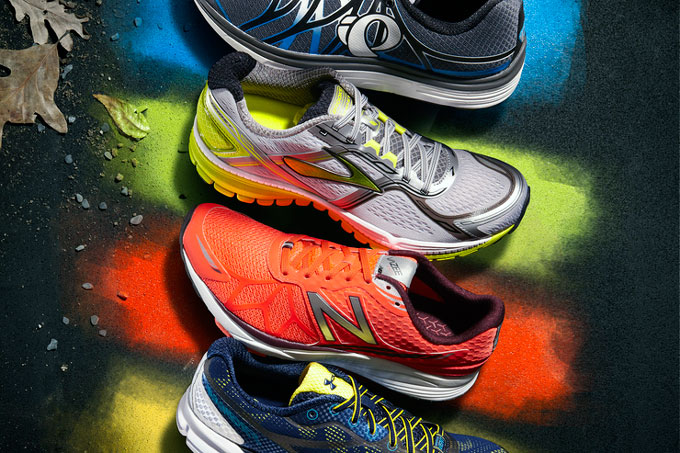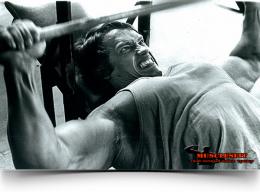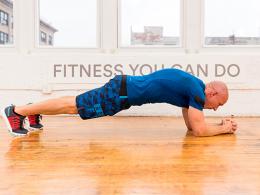How to choose the right running shoes
Take a look at people jogging. In 90% of cases, you will find completely wrong sports shoes. The first question that a person who decides to do health aerobics should worry about is how to choose the right running shoes?
By ignoring our recommendations, you are guaranteed to choose the wrong running shoes and automatically expose your body and legs to unnecessary stress. Firstly, there are risks of injury to the musculoskeletal system and ligamentous apparatus. Secondly, improperly selected sneakers increase the vertical shock load on the intervertebral discs. Thirdly, consider that it is better not to run at all if you are not serious about choosing running shoes.
- Good cushioning is the first thing you should look for when choosing a running shoe. In this way, you reduce the impact load and increase the repulsion ability, which will significantly increase the speed and quality of the run. It is important that the correct location of the shock absorbers is observed: one under the heel, the second directly under the toe. In the first case, they are needed to reduce the running load, the second shock absorber ensures a smooth transfer of body weight from the heel to the toes and eliminates unnecessary discomfort on the runner's feet. Air gap is an innovative way of cushioning, with the help of new technologies, the sole is filled with special silicone or gas. An excellent analogue of the air version are springs under heels, reviews of professional runners confirm their effectiveness.
- Outsole for running shoes, directly interacting with the coating, it must have such characteristics, like strength, softness, and not have the properties to wear off quickly on the work surface. The most effective test: mark the sole of the sneakers on the floor, if a mark remains, you must put aside the purchase of such running shoes. Within a short period of time, you will completely wear out the sole of these sneakers, especially if you run on asphalt and your weight is more than 80 kilograms.
- In addition to the above characteristics of running shoes, it is worth adding h then they should be comfortable, light, properly fix the position of the foot and be sure to lace up. Never buy sports shoes without laces.
- Must have supinator, which should be located directly on the insole of the sneakers. It performs two very important functions: it provides additional comfort and reduces compression on the spine during active running, especially in rugged terrain. Be sure to see that the insole is removable: this will provide better care for sports shoes and increase body hygiene. The feature of removable insoles will also extend the life of the sneaker, while you can always insert new insoles with arch support.
- When you wonder how to choose running shoes, care must be taken to outsole was aggressive. This is especially true if you are going to run outdoors. This ensures maximum grip on the work surface. Sneakers with a grooved surface are more suitable for running on asphalt.
- Remember the undeniable axiom: hard sole it is necessary to select people with a large initial weight, and, conversely, the less you weigh, the softer should be sole. If this advice is neglected, a person weighing 100 kilograms will very quickly push through the soft structure of the sole, and the shoes will completely lose their cushioning properties. By purchasing hard running shoes with a body weight of no more than 70 kilograms, you will provide yourself with discomfort and flat feet. To avoid the above problems, carefully follow the criteria for choosing running shoes.
What material should running shoes be made of?
Firstly, the material must have three properties at the same time: strength, provide ventilation and be as soft as possible.
Secondly, to reduce sweaty feet, buy sneakers made from natural materials. The ideal option is when the top of running shoes is made of practical fabric mesh with additional genuine leather inserts.
Thirdly, the running mesh should have maximum strength and lightness, be guided by this criterion when the question arises, how to choose running shoes. Typically, leading manufacturers in the manufacture of running shoes use a double mesh: this will significantly increase the service life and increase the protection of the foot from external damaging factors. When running actively, the legs need to breathe, so before buying, make sure that the material is breathable.
How to choose the right shoe size?
- To ensure maximum breathability when jogging, it is necessary to choose shoes that are slightly larger. Active aerobics contributes to a strong rush of blood, which causes additional swelling of the legs. Therefore, if you choose the ideal size, in 90% of cases you will feel discomfort and additional stress on the ankle joint.
- The ideal way to check the correct size is as follows. To do this, you need to unlace the sneakers for one turn and only then lace them back tightly. To make sure that the chosen size is correct, try to remove the leg: if you don’t have to make an effort, then everything is fine. Naturally, you need to understand that a strong play in the heel area indicates a bust with the size.
- The second step in choosing the right size is the following steps. Return the lacing to its original position and lace tightly again. The top of your running shoes should fit your feet comfortably, without creating unnecessary inconvenience.
- If you feel discomfort, do not rush to increase the size: lace up the sneakers in a different way and repeat the procedure. Not only the size of the shoe depends on the lacing technique, but also the comfort during active sports.
- The ideal shoe width should be between 3 and 5 millimeters. free play relative to your fingers. Try to move your heel to the sides: if this works out smoothly, the shoes are perfect for your running requirements.
- It is mandatory to test the fold line. Take one half-pair of sneakers and simulate the movement of the ankle joint on the floor, now see where the fold line occurs. If the model is properly sewn, the fold will match the foot. Remember: All other running shoes that don't fit your foot will develop flat feet 90% of the time. Make sure that the sneakers do not press in the fold area: this will prevent pain in the legs.
- Insoles for flat feet. If you have significant problems with the arch of the foot, it is imperative to purchase an insole for flat feet. This will help relieve unnecessary fatigue, increase the flow of fresh blood and provide additional support to your feet.

The most common mistake when choosing running shoes:
First of all, being interested in how to choose the right running shoes, understand one important thing, on which further comfort greatly depends. Always choose shoes for active sports in the evening: by this time the feet swell and change the size of the leg to a large extent. Sneakers bought in the morning can make an unpleasant surprise and turn out to be small.
Using the above recommendations, you will be able to find the perfect running shoes that will keep your feet as healthy and comfortable as possible. Wellness running is the best way to make the body worthy of your spirit, run and train in the right sports shoes.






